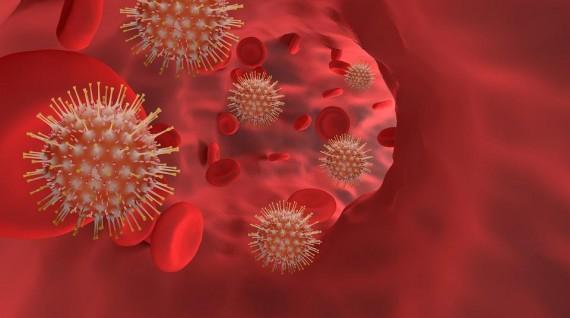According to the Ministry of Science and Technology on Wednesday, scientists from the Indian Institute of Science (IISc) and the CSIR-Institute of Microbial Technology have created a novel mechanism to inactivate the COVID (SARS-CoV-2) virus by preventing its entry into cells and lowering its capacity to infect people.
Researchers have described the creation of a new family of synthetic peptides that can both prevent COVID (SARS-CoV-2) viral entrance into cells and clump the virus’s infectious virions (particles) together. This innovative strategy offers a different way to render viruses like SARS-CoV-2 dormant and holds promise for a new family of peptides as antivirals.
The fast introduction of new SARS-CoV-2 virus strains has reduced the level of protection provided by COVID-19 vaccinations, necessitating additional measures to avoid viral infection.
Protein-protein interactions are recognised to frequently resemble a lock and a key. Synthetic peptides that imitate, compete with, and block the binding of the “key” to the “lock” or vice versa can interfere with this interaction.
The Ministry claims that IISc researchers have taken use of this strategy to create peptides that can bind to and inhibit the spike protein on the surface of the SARS-CoV-2 virus. With the use of cryo-electron microscopy (cryo-EM) and other biophysical techniques, this binding was further and thoroughly characterised.
The study was funded by the Department of Science and Technology’s Department of Engineering and Research Board (SERB), a governmental authority, under the COVID-19 IRPHA call (DST).
The created peptides have helical, hairpin-like shapes and are each capable of producing a dimer by joining forces with another of their sort. Two “faces” are presented by each dimeric “bundle” to interact with two target molecules.
In the study published in Nature Chemical Biology, the researchers hypothesised that the two faces would bind to two separate target proteins locking all four in a complex and blocking the targets’ action. The team decided to test their hypothesis by using a peptide called SIH-5 to target the interaction between the Spike (S) protein of SARS-CoV-2 and ACE2 protein, the SARS-CoV-2 receptor in human cells.
The S protein is a trimer – a complex of three identical polypeptides. Each polypeptide contains a Receptor Binding Domain (RBD) that binds to the ACE2 receptor on the host cell surface. This interaction facilitates viral entry into the cell.
The SIH-5 peptide was designed to block the binding of the RBD to human ACE2. When a SIH-5 dimer encountered an S protein, one of its faces bound tightly to one of the three RBDs on the S protein trimer, and the other face bound to an RBD from a different S protein. This ‘cross-linking’ allowed the SIH-5 to block both S proteins at the same time.
The SIH-5 peptide was designed to block the binding of the RBD to human ACE2. When a SIH-5 dimer encountered an S protein, one of its faces bound tightly to one of the three RBDs on the S protein trimer, and the other face bound to an RBD from a different S protein. This ‘cross-linking’ allowed the SIH-5 to block both S proteins at the same time.
Under cryo-EM, the S proteins targeted by SIH-5 appeared to be attached head-to-head, and the spike proteins were being forced to form dimers. Subsequently, the researchers showed that SIH-5 inactivated the viruses efficiently by cross-linking the spike proteins from different virus particles.
The team consisting of researchers of IISc and CSIR-Institute of Microbial Technology tested the peptide for toxicity in mammalian cells in the lab and found it to be safe. When hamsters were dosed with the peptide and subsequently exposed to a high dose of SARS-CoV-2, they showed decreased viral load as well as much less cell damage in the lungs compared to hamsters exposed only to the virus, demonstrating the promise of this class of peptides as antivirals.
The researchers believe that with minor modifications and peptide engineering, this lab-made mini protein could inhibit other protein-protein interactions as well.
Follow Medically Speaking on Twitter Instagram Facebook
Also Read: Covid case update: India reports 20,139 new cases in last 24 hours





